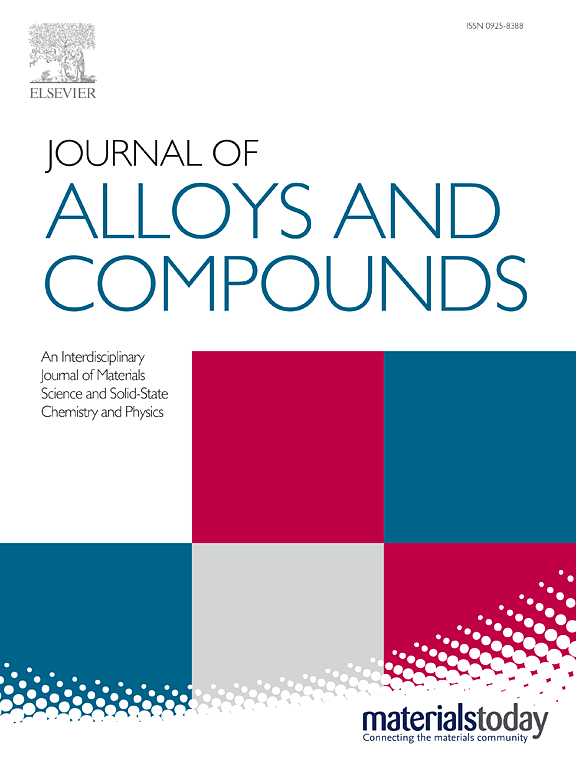用于柔性微超级电容器增强的独立双层复合膜的快速重力导向制备
IF 5.8
2区 材料科学
Q2 CHEMISTRY, PHYSICAL
引用次数: 0
摘要
优化微超级电容器活性材料的薄膜制备工艺是提高其性能的关键。然而,在丝网印刷过程中,油墨粘度和流量的控制不当会导致印刷质量和薄膜均匀性差。真空过滤方法在膜转移和大规模生产方面也有局限性。在这里,通过室温蒸发在聚合物柔性衬底上构建均匀的复合薄膜。利用重力场中的不同沉降速率,该过程产生双层结构,其中活性物质形成底层(与基底接触),MXene形成顶层。FESEM和XRD分析证实了双层异质结构的形成。此外,FESEM图像显示,底层纳米线的穿孔使顶部MXene层具有多孔结构,从而加速了离子传输。得益于独特的双层非均质结构,优化后的复合膜电极(MXene-Mo2C@N/C)在0.1 mA cm - 3下的面电容为70 mF cm - 2,体积电容为86 F cm - 3,表现出优异的电容性能。在27.5 μW cm−2的功率密度下,电极的能量密度高达2.94 μWh cm−2。这种重力引导的方法拓宽了材料的选择,并确定了制造可扩展的、独立的非均质双层薄膜的关键参数。本文章由计算机程序翻译,如有差异,请以英文原文为准。

Facile gravity-steered fabrication of free-standing bilayer composite films for flexible micro-supercapacitor enhancement
Optimizing the film fabrication process of active materials for micro-supercapacitors (MSCs) is crucial for enhancing their performance. However, improper control of ink viscosity and flow during the screen-printing process can result in poor print quality and film uniformity. Vacuum filtration methods also have limitations in film transfer and large-scale production. Here, a uniform composite film is constructed on a polymer flexible substrate via room-temperature evaporation. Exploiting differential sedimentation rates in a gravitational field, this process yields a bilayer structure where the active material forming the bottom layer (in contact with the substrate) and MXene forming the top layer. FESEM and XRD analyses verify the formation of a well-defined bilayer heterostructure. Moreover, FESEM images reveal that perforation by the underlying nanowires imparts a porous architecture to the top MXene layer, thereby accelerating ion transport. Benefiting from the unique bilayer heterogeneous structure, the optimized composite film electrodes (MXene-Mo2C@N/C) exhibit outstanding capacitive performance, achieving an areal capacitance of 70 mF cm−2 and a volumetric capacitance of 86 F cm−3, both at 0.1 mA cm−3. These electrodes deliver a high energy density of 2.94 μWh cm−2 at a power density of 27.5 μW cm−2. This gravity-guided approach widens material options and identifies the key parameters for fabricating scalable, free-standing heterogeneous bilayer films.
求助全文
通过发布文献求助,成功后即可免费获取论文全文。
去求助
来源期刊

Journal of Alloys and Compounds
工程技术-材料科学:综合
CiteScore
11.10
自引率
14.50%
发文量
5146
审稿时长
67 days
期刊介绍:
The Journal of Alloys and Compounds is intended to serve as an international medium for the publication of work on solid materials comprising compounds as well as alloys. Its great strength lies in the diversity of discipline which it encompasses, drawing together results from materials science, solid-state chemistry and physics.
 求助内容:
求助内容: 应助结果提醒方式:
应助结果提醒方式:


